
Welcome to the vibrant, colorful world of custom tie-dye shirts. An ever-popular look, the tie-dye shirt has transcended generations and continues to symbolize individuality and creativity.
This article provides expert graphic design tips, examples of different tie-dye patterns and colors, and the best printing methods to help you create a successful and outstanding custom print on tie-dye shirts.
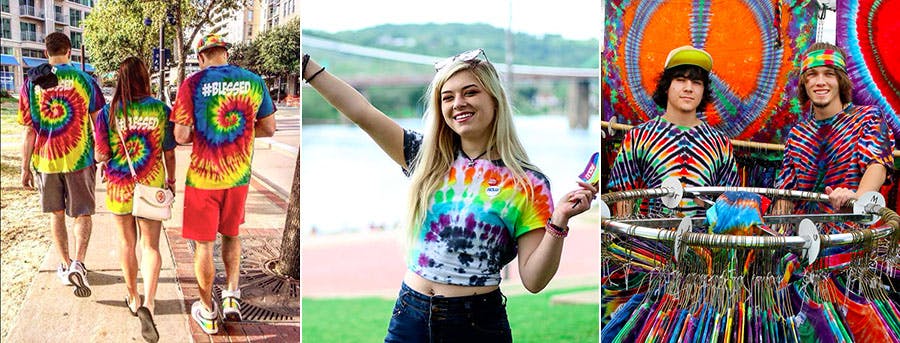
Design tips for printing on tie-dyes
Creating custom tie-dye shirt designs is a fun and creative process but presents unique challenges due to the fabric's distinctive patterns and colors. We've compiled a list of eight essential design tips to follow so you can create a print that effectively communicates your message and showcases your creativity.
1. Choose the right colors
Consider the tie-dye pattern's color palette when selecting colors for your design. Sometimes trying to match the colors of the shirt can result in the design getting lost in the mix. Opt for colors that complement and contrast with the background to ensure your design remains visible– or, better yet, pops.

2. Choose the right fonts
Selecting the appropriate font is essential for readability and visual appeal. Stick to bold, simple fonts that are easy to read and won't get lost in the tie-dye pattern. Avoid intricate or thin fonts, which may become difficult to decipher against the colorful background.
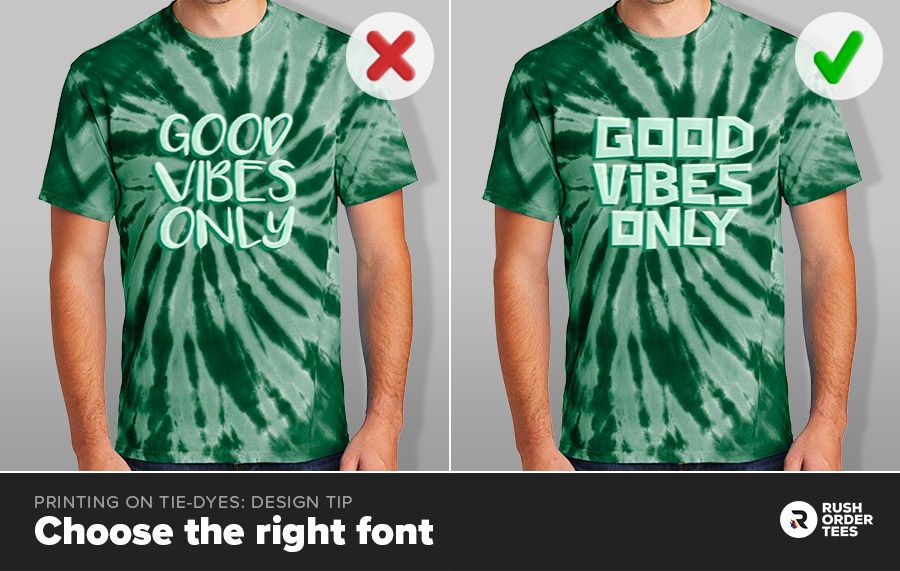
3. Add outlines to text
Consider adding an outline or a shadow effect to your text to enhance readability further. This additional layer can contrast and separate the text and the tie-dye background, making your message easily discernible.

4. Keep the design simple
Tie-dye patterns can be busy and visually captivating, so keeping your design simple and clean is best. Opt for minimalist graphics or logos that won't compete with the tie-dye pattern and will maintain a clear, uncluttered appearance.
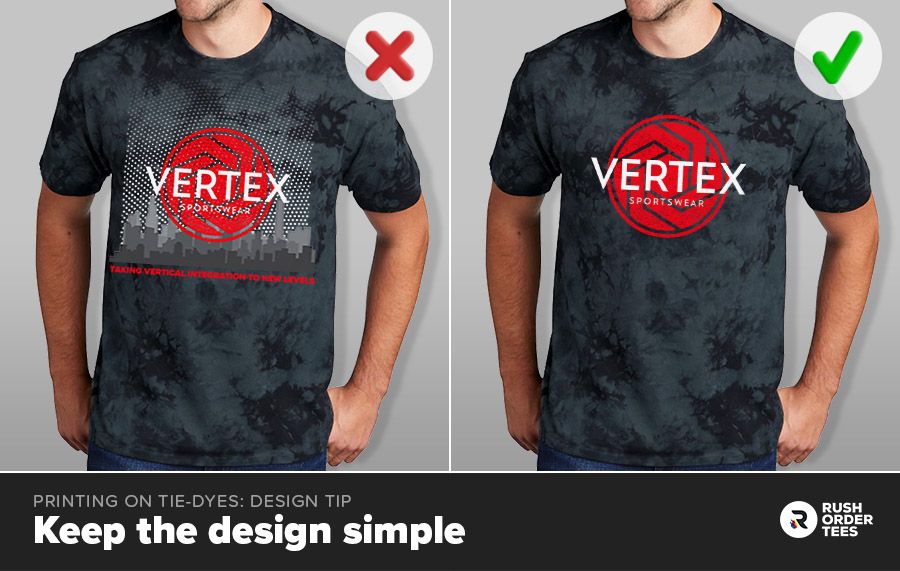
5. Use multiple print locations
Experiment with different print locations to create a unique and exciting custom tie-dye shirt. Consider printing your design on the back, sleeves, or even the hood of a hoodie. This approach can add an element of surprise and personalization to your shirt.
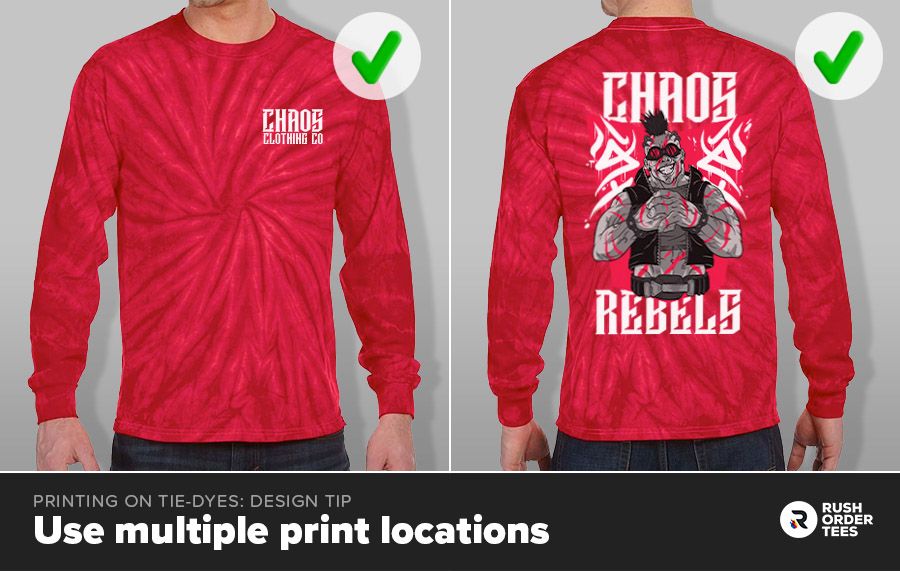
6. Prioritize contrast
To make sure your design stands out, it's crucial to have enough contrast between the design and the tie-dye background. This is distinctive from color choices and has more to do with the brightness or darkness of tones (also known as value). Use darker tones for lighter shirts and vice versa. Bright white will contrast against most tie-dye shirts.
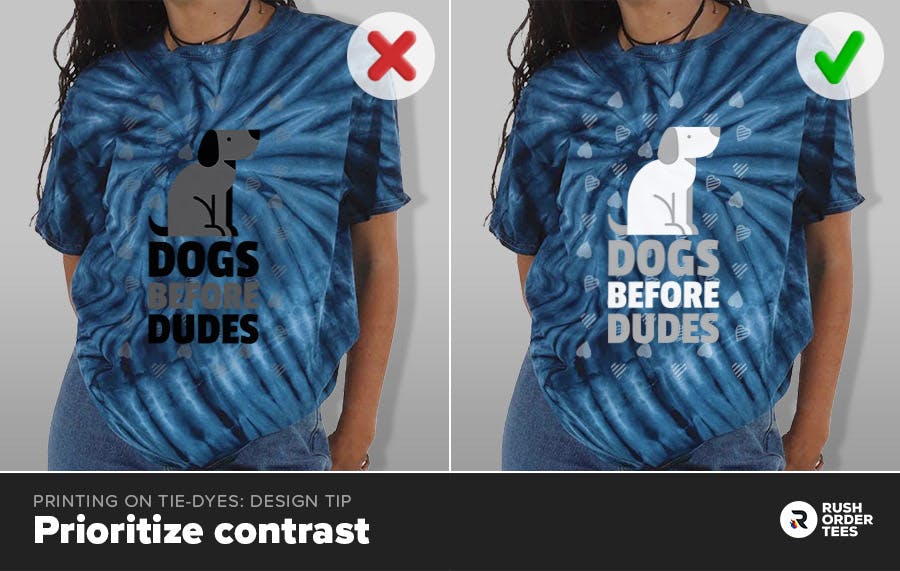
7. Design for the tie-dye pattern
Keep the tie-dye pattern in mind when designing your shirt. Consider how the pattern may interact with your design and plan accordingly. For example, if your shirt features a spiral pattern, try incorporating the spiral into your design for a cohesive look.

8. Test out your design
Before finalizing your design, do a test print or create a digital mockup to see how it looks on the tie-dye shirt. This step can help you identify any issues or necessary adjustments before committing to the final print, saving you time and resources.

Types of tie-dyes
One of the great things about tie dyes is that each shirt is unique in its colors and patterns; no two shirts are identical. Below are some of the most popular tie-dye patterns, colors, and shirt types to help you decide which combination will make your custom creation stand out.
Tie-dye pattern styles
Patterns make each tie-dye unique because each garment is individually dyed. There are many different kinds of patterns, but some of the most common patterns can be grouped into the following categories.
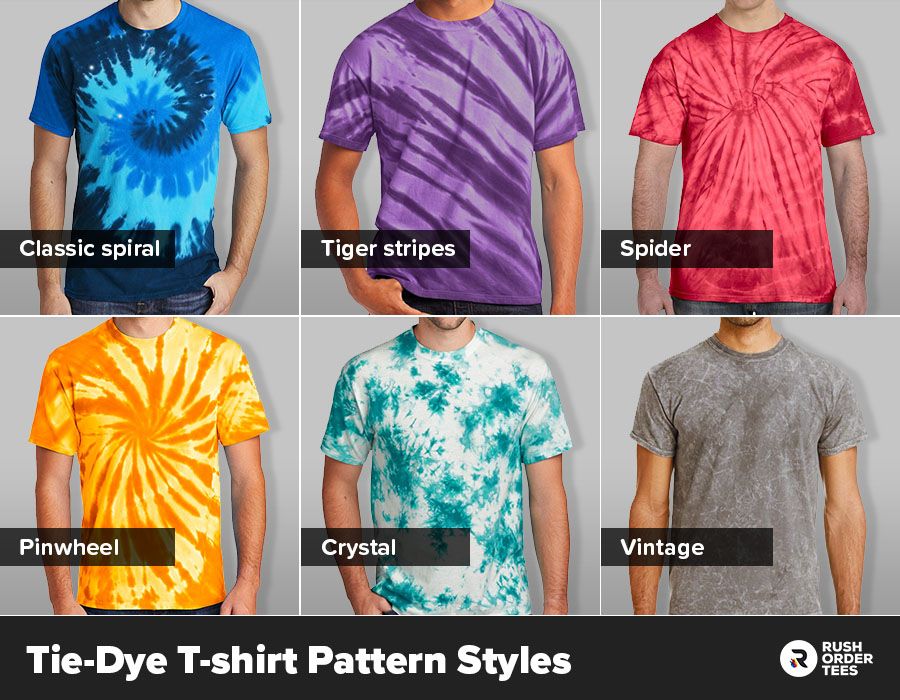
- Spiral is a quintessential tie-dye design with a classic swirl pattern.
- Tiger Stripes don't converge in the center but rather go vertically across.
- Spider has arms that fan outward randomly from the center.
- Pinwheel is like a combination of spiral and spider patterns.
- Crystal (a.k.a. crumple) are random, jagged-edged organic patterns.
- Vintage has a minimal, random, crumpled pattern with a faded look.
Tie-dye color styles
Tie-dye shirts are anything but typical when it comes to colors. However, certain color combination styles can be categorized. Here are six popular color style options for tie-dye shirts.

- Rainbow is the most vibrant and kaleidoscopic of color styles. A classic.
- Pastels are increasingly popular for a toned-down and washed-out look.
- Contrasting is strong opposing colors that clearly define the pattern.
- Semi-solid has minimal contrast that looks like a single color from a distance.
- Two-tone has similar colors or shades of the same color for a subtle pattern.
- Dark is a cool look with black or charcoal gray, sometimes with touches of color.
Types of tie-dye shirts
- Short sleeves are the classic choice, perfect for warm weather and casual events.
- Long sleeves offer extra coverage and style for cooler climates or a different look.
- Tank tops are a versatile choice for summer, festivals, workout wear, or athletic events.
- Hoodies are perfect for cozy, casual wear and offer a larger canvas for your tie-dye design.
Tie-dye print methods
Printing on tie-dye shirts requires special consideration due to the fabric's unique nature of the fabric, so it's crucial to choose a print method that will complement and enhance the tie-dye while ensuring your custom design stands out. Here are the most popular and effective ways to customize tie-dye shirts.
Screen printing
Screen printing is popular for printing on tie-dye shirts, as it produces vibrant, long-lasting colors that hold up well against the bold patterns of the fabric. For tie-dye shirts, it's crucial to use high-opacity ink to ensure the design remains visible and doesn't get lost in the background pattern.
DTF (Direct-to-Film) transfers
DTF transfers are a newer technology that involves printing the design onto a thin film that's heat-pressed onto the shirt. This method allows for high-detail, full-color designs and works particularly well on tie-dye shirts, and is perfect for intricate, multicolor designs that might be challenging with screen printing.
Embroidery
Embroidery adds sophistication and texture to a tie-dye shirt. This method involves stitching your design directly onto the fabric, creating a raised, tactile effect. It's great for small logos or monograms. Although costlier than other methods, the result is a high-quality, durable embellishment that adds a unique touch.
Custom printing to dye for
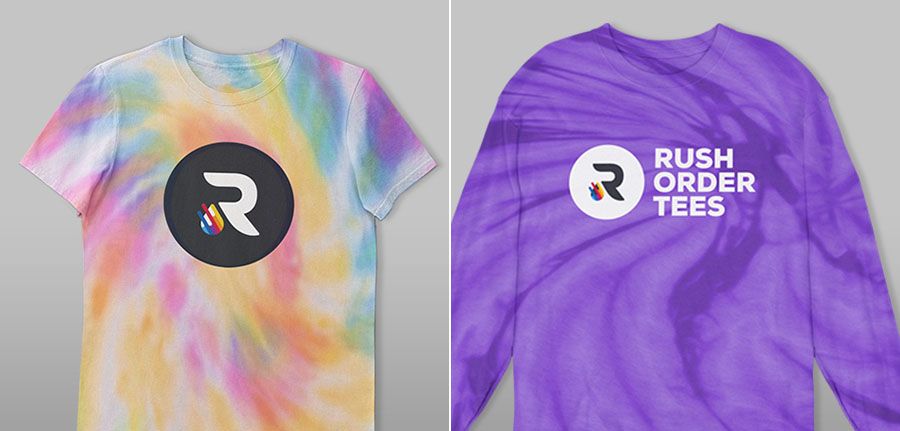
When it's time to unleash your inner artist and create your own custom tie-dye, jump into our easy-to-use Design Studio.
Remember that the key to success is balancing creativity with practicality, ensuring your designs are visually striking and easily readable. Our team is here to help you at every step, providing expert advice and quality services to bring your vision to life.

Imri Merritt
About the Author
A graduate of the Multimedia program at the University of the Arts in Philadelphia, Imri Merritt is an industry veteran with over 20 years of graphic design and color separations experience in the screen printing industry.

